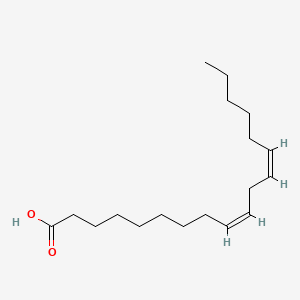| MeSH term | MeSH ID | Detail |
|---|---|---|
| Prostatic Neoplasms | D011471 | 126 associated lipids |
| Kidney Diseases | D007674 | 29 associated lipids |
| Weight Gain | D015430 | 101 associated lipids |
| Glioma | D005910 | 112 associated lipids |
| Cell Transformation, Neoplastic | D002471 | 126 associated lipids |
| Metabolism, Inborn Errors | D008661 | 46 associated lipids |
| Hypercholesterolemia | D006937 | 91 associated lipids |
| Thrombosis | D013927 | 49 associated lipids |
| Arteriosclerosis | D001161 | 86 associated lipids |
| Leukemia | D007938 | 74 associated lipids |
| Carcinoma, Hepatocellular | D006528 | 140 associated lipids |
| Olfaction Disorders | D000857 | 17 associated lipids |
| Lipid Metabolism, Inborn Errors | D008052 | 26 associated lipids |
| Staphylococcal Skin Infections | D013207 | 9 associated lipids |
| Polycystic Ovary Syndrome | D011085 | 14 associated lipids |
| Seizures | D012640 | 87 associated lipids |
| Birth Weight | D001724 | 23 associated lipids |
| Cystic Fibrosis | D003550 | 65 associated lipids |
| Hypertension | D006973 | 115 associated lipids |
| Hypersensitivity, Immediate | D006969 | 14 associated lipids |
Linoleic acid
Linoleic acid is a lipid of Fatty Acyls (FA) class. Linoleic acid is associated with abnormalities such as Diabetes Mellitus, Non-Insulin-Dependent, Metabolic syndrome, Obesity, Chronic Obstructive Airway Disease and Pneumonia. The involved functions are known as Insulin Resistance, Inflammation, Synthesis, Pathological accumulation of air in tissues and cytokine biosynthesis. The associated genes with Linoleic acid are TNF gene, CCL2 gene and TLR4 gene. The related lipids are palmitoleic acid, nervonic acid and Sphingolipids.
Cross Reference
Introduction
To understand associated biological information of Linoleic acid, we collected biological information of abnormalities, associated pathways, cellular/molecular locations, biological functions, related genes/proteins, lipids and common seen animal/experimental models with organized paragraphs from literatures.
What diseases are associated with Linoleic acid?
Linoleic acid is suspected in Obesity, Diabetes Mellitus, Non-Insulin-Dependent, Metabolic syndrome, Chronic Obstructive Airway Disease, Pneumonia and other diseases in descending order of the highest number of associated sentences.
Related references are mostly published in these journals:
| Disease | Cross reference | Weighted score | Related literature |
|---|
Possible diseases from mapped MeSH terms on references
We collected disease MeSH terms mapped to the references associated with Linoleic acid
PubChem Associated disorders and diseases
What pathways are associated with Linoleic acid
There are no associated biomedical information in the current reference collection.
PubChem Biomolecular Interactions and Pathways
Link to PubChem Biomolecular Interactions and PathwaysWhat cellular locations are associated with Linoleic acid?
There are no associated biomedical information in the current reference collection.
What functions are associated with Linoleic acid?
Related references are published most in these journals:
| Function | Cross reference | Weighted score | Related literatures |
|---|
What lipids are associated with Linoleic acid?
Related references are published most in these journals:
| Lipid concept | Cross reference | Weighted score | Related literatures |
|---|
What genes are associated with Linoleic acid?
Related references are published most in these journals:
| Gene | Cross reference | Weighted score | Related literatures |
|---|
What common seen animal models are associated with Linoleic acid?
There are no associated biomedical information in the current reference collection.
NCBI Entrez Crosslinks
All references with Linoleic acid
Download all related citations| Authors | Title | Published | Journal | PubMed Link |
|---|---|---|---|---|
| Pornputtapitak W et al. | Development of γ-Oryzanol Rich Extract from Leum Pua Glutinous Rice Bran Loaded Nanostructured Lipid Carriers for Topical Delivery. | 2018 | J Oleo Sci | pmid:29367479 |
| Wang X et al. | From the Cover: Identification of Natural Products as Inhibitors of Human Organic Anion Transporters (OAT1 and OAT3) and Their Protective Effect on Mercury-Induced Toxicity. | 2018 | Toxicol. Sci. | pmid:29045746 |
| Liu Q et al. | Dietary n-6:n-3 ratio and Vitamin E improve motility characteristics in association with membrane properties of boar spermatozoa. | 2017 Mar-Apr | Asian J. Androl. | pmid:26763547 |
| Bentrad N et al. | Identification and evaluation of antibacterial agents present in lipophilic fractions isolated from sub-products of Phoenix dactilyfera. | 2017 | Nat. Prod. Res. | pmid:28403631 |
| Zhou Y et al. | UCP2 attenuates apoptosis of tubular epithelial cells in renal ischemia-reperfusion injury. | 2017 | Am. J. Physiol. Renal Physiol. | pmid:28424210 |
| Du H et al. | Extraction and the Fatty Acid Profile of Rosa acicularis Seed Oil. | 2017 | J Oleo Sci | pmid:29129896 |
| Teh SS et al. | Recovery and Utilization of Palm Oil Mill Effluent Source as Value-Added Food Products. | 2017 | J Oleo Sci | pmid:29093377 |
| Leitch AC et al. | B-13 progenitor-derived hepatocytes (B-13/H cells) model lipid dysregulation in response to drugs and chemicals. | 2017 | Toxicology | pmid:28552552 |
| Sengupta N et al. | Exchange of polar lipids from adults to neonates in Daphnia magna: Perturbations in sphingomyelin allocation by dietary lipids and environmental toxicants. | 2017 | PLoS ONE | pmid:28542405 |
| Segal LN et al. | Randomised, double-blind, placebo-controlled trial with azithromycin selects for anti-inflammatory microbial metabolites in the emphysematous lung. | 2017 | Thorax | pmid:27486204 |
